The Hawley retainer is perhaps the most well-known type of retainer used for keeping teeth in place after orthodontic treatment. This removable retainer can easily be identified due to its iconic wire that goes across the front teeth, and acrylic plate that sits inside the mouth.
If you’re reading this article, chances are you’re considering what type of retainer is best for either you or your child, after finishing with braces. To help you figure this out, we’ll go over some basic information about the Hawley, such as:
- How much do Hawley retainers cost in the UK?
- How long do they last?
- Hawley vs Essix
- How to clean them
We hope this information helps you choose the best retainer for your or your child’s post-orthodontic needs.
What is a Hawley retainer?
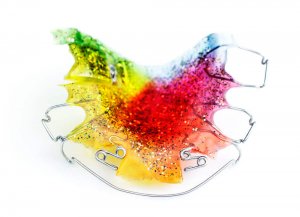
A Hawley retainer is a removable device made of wire and hard plastic material. When you hear the word retainer, this is probably what you think of first because of its iconic design. Unlike some other more modern types of retainer, the Hawley is quite noticeable thanks to the wire that sits along the front few teeth to keep them in place. The design hasn’t changed much since its creation in 1919.
The wire from the retainer wraps around the front of your teeth and the hard acrylic sits against the roof of your mouth (for uppers) or the hard part of the gums (for lowers). There are wire clasps at the back of the retainer to help keep it in place in your mouth.
This removable type of retainer is one of the most affordable, and should last five years or more. That is, as long as you take good care of it and don’t lose it!
What can a Hawley retainer do?
A Hawley retainer is usually used to maintain alignment of the front teeth after braces are removed. Hawley retainers are typically worn full time for three months after braces are removed and then nightly and at home only for the next nine months. Thereafter, nightly wear is usually sufficient but your orthodontist will advise you on exactly when to wear it.
Typically the Hawley retainer is used for top teeth, but it can also be used for the bottom teeth. The acrylic arc is designed to fit comfortably on the lingual walls or palate of the mouth while the wire wraps around the teeth and helps them to maintain their position.
Orthodontic patients may be discouraged to learn that after wearing braces to straighten their teeth they still need to keep them straight with a retainer. As your teeth move into place while wearing braces, the bone around the teeth softens to allow movement.
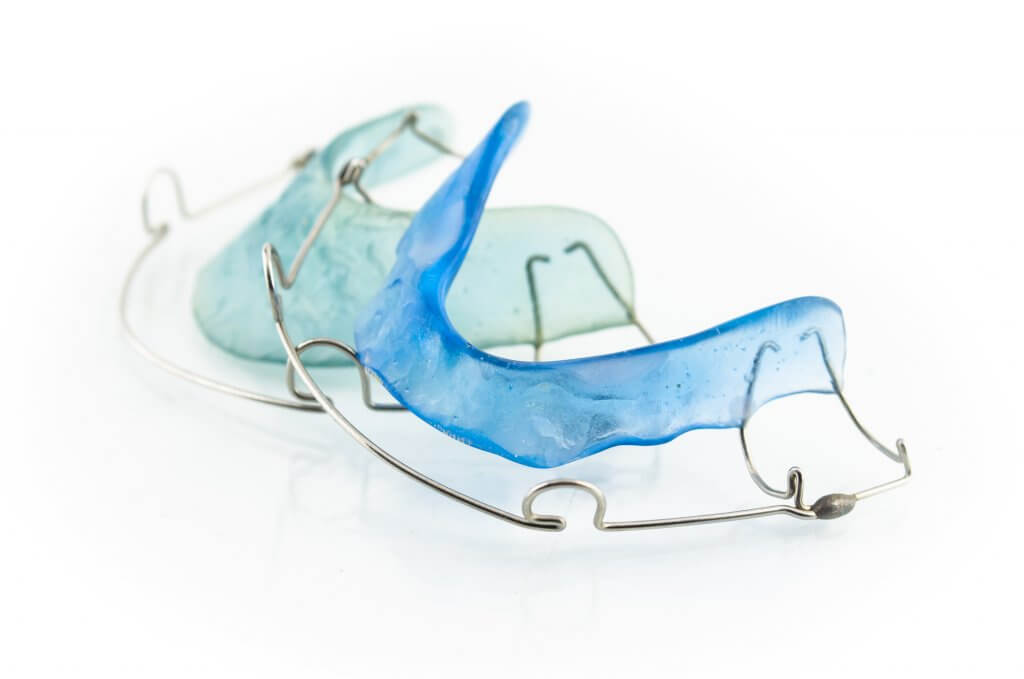
That’s why an appliance, often the traditional Hawley retainer, is needed to prevent the teeth from reverting back to the way they started. The last thing you want to do is spend 18 to 24 months wearing braces and then end up with a poor result.
While every patient is different, your orthodontist is likely to have you wear your retainer 24/7 for three to six months. Once that stage of treatment is complete, you will be able to ease up to wearing your retainer only while you sleep.
When your orthodontist is confident your teeth are stable in their ideal position you can wear them less often. Many patients choose to wear retainers indefinitely to keep their teeth straight as they grow older.
One rule of thumb: if you notice that your retainer feels tight when you put it on, you need to begin wearing them more often!
Dr. Clarke Stevens, Braces Omaha
Can a Hawley retainer move teeth? It’s not what they are usually used for, but it is possible to make minor adjustments to tooth alignment by positioning the wires in a certain way. Your dentist might do this if you haven’t worn your retainer enough after braces and your teeth have started to relapse.
How long does a Hawley retainer last?
A Hawley will typically last 5-10 years, as long as you take good care of it and don’t lose it or break it. The materials used in Hawley retainers are more durable than the clear Essix retainer, mostly because of the materials used.
Acrylic and steel wire are much longer-lasting than a thin plastic shell, but that doesn’t mean that a Hawley retainer is invincible. It is important to always make sure you store your retainer in its case when it isn’t in your mouth, to prevent loss or damage. You should always remove it while you eat, and also take care to clean it properly every day.
The way you insert and remove your retainer can also affect its lifespan. Don’t bite down on it to clip it into place, and always use the clasps at the back to remove it, rather than pulling on the bow at the front. In the video below, orthodontist Dr Sarah Sadek shares some more tips for Hawley retainer care.
How to clean Hawley retainers
Hawley retainers require daily cleaning to prevent gum disease, bad smells, and trapped food debris. Oral hygiene is always important, but even more so when there are retainers involved. Neglecting to clean your retainer can lead to a build-up of plaque which will contribute to enamel degradation over time.
Read our retainer cleaning guide to find out the best products to use for cleaning a Hawley retainer. You can buy special retainer cleaning tablets, or use denture cleaning tablets, although these may cause slight discolouration to the acrylic over time.
It is important to note that there are two types of Hawley retainers and each type of retainer requires a different method of cleaning.
Hawley retainers with extra metal pieces soldered on:
- DO NOT soak a retainer with soldered pieces regularly. This will eventually break down the solder on the retainer, leading the wire to snap.
- Soaking your retainer every once in a while is okay, but not every day.
- Use a soft toothbrush and toothpaste daily to prevent bad smells and plaque buildup on your retainer.
Hawley retainers without solder:
- Soak your retainer in a cleansing solution daily, or at least once every few days, to maintain optimal oral hygiene.
- Brush your retainers as you would your teeth, with a soft bristle toothbrush and toothpaste. Don’t forget to brush the metal wire as well.
How much does a Hawley retainer cost in the UK?
Hawley retainers cost £70 – £150 for one, so up to £300 for a set — more than you’ll usually pay for clear retainers. Hawleys should last much longer, so they can work out cheaper in the long run.
If you or your child have had orthodontic treatment on the NHS then your first retainer will be included with this. If it gets lost or broken then you will probably have to pay for a replacement retainer. Note that NHS retainers may have more limited colour options than those purchased privately.
It may be possible to repair a Hawley retainer if the plastic cracks or a wire comes loose. Take it to your orthodontist and they will let you know whether it can be saved.
Can you buy a Hawley retainer online in the UK?
Some places do sell Hawley retainers online, although there is not currently a reliable outlet to purchase Hawley retainers online in the UK. You can, however, buy a clear (Essix) retainer online. These are less complicated in design since they don’t have any wire parts, they just completely cover your teeth.
This process involves taking your own teeth impressions at home with a kit provided, and then sending these off to make your retainers. The finished devices are then posted to you.
Hawley vs clear Essix vs fixed retainers
Choosing the right type of retainer is a very personal endeavour, and you may need to try a couple before you find one you’re really comfortable with. If you are just finishing treatment with aesthetic adult braces, you may not want a retainer with an obvious metal wire, for instance. Or you might want to try a clear removable device before committing to a fixed retainer.
Of course, you can discuss your options with your dentist or orthodontist before making any definite decisions.
There are three main types of appliances: Hawley (the metal and acrylic combination), Essix (clear, plastic trays), and fixed/bonded retainers. There are pros and cons to each type that all require consideration before making a decision. Here’s an overview:
Hawley
Pros:
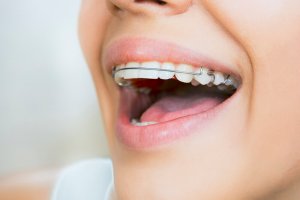
- Cheaper than bonded
- More durable than an Essix
- Easy to clean
- Cool colours and patterns for the acrylic palate piece
- Lasts 5-10 years
Cons:
- More expensive than an Essix
- Easy to lose
- Visible on teeth
- Possibly uncomfortable
Essix
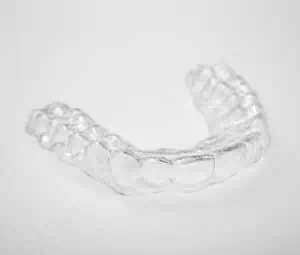
Pros:
- Cheapest option
- Invisible
- Easy to clean
Cons:
- Fragile
- Easy to lose
- Only lasts 6 months to a few years
Fixed
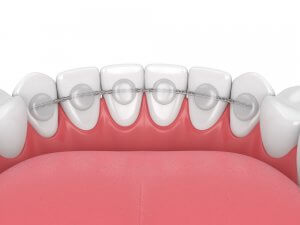
Pros:
- Impossible to lose!
- Lasts up to 10 years – maybe more
- Most sustainable option
- Invisible
- The most durable option
Cons:
- Difficult to clean
- Expensive upfront cost
- Takes time to adjust to the feeling inside the mouth
Check out the table below for a summary of the differences:
Retainer type | Cost | Lifespan | Ease of maintenance |
Hawley | £70 - £150 | 5–10 years | Easy to remove and clean, durable, easy to lose |
Essix | £60 - £145 | 6 months to 3 years | Easy to remove and clean, easily breakable, easy to lose |
Fixed/bonded | £100 - £400 | Up to 10 years | Difficult to maintain good oral hygiene, durable, impossible to lose |
If you decide that you’d like an Essix retainer, you can order one online for up to 50% less than you would get form the dentist. NewSmile provides bespoke, dental-grade retainers — made from moulds of your teeth that you make at home with an impression kit they send you. Just order an impression kit to get started.
Conclusion
In short, Hawley retainers are a durable and affordable choice if you don’t mind having a visible wire at the front. Clear retainers aren’t as durable but have the benefit of being almost invisible. If you’re worried about losing, dropping, or forgetting to put your retainer in then consider a fixed retainer instead. These are more expensive up-front but can’t be lost or forgotten!
If you’re still unsure which retainer would be best for you, speak to your dentist and listen to their recommendation. If you try a removable retainer and don’t get on well with it, you can always switch to a fixed wire later on.
NCBI: The retention characteristics of Hawley and vacuum-formed retainers with different retention protocols. Consulted March 18, 2020.




